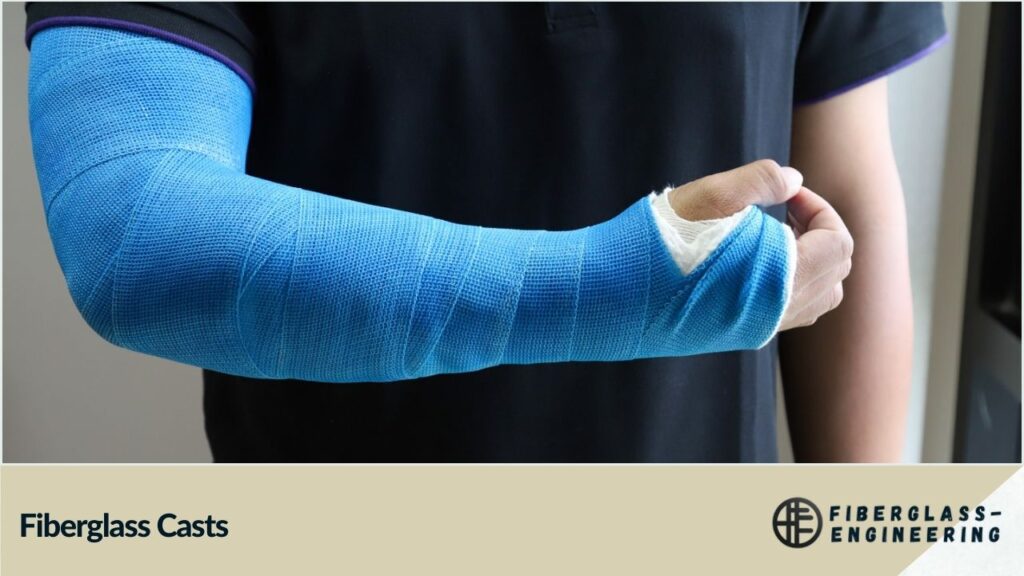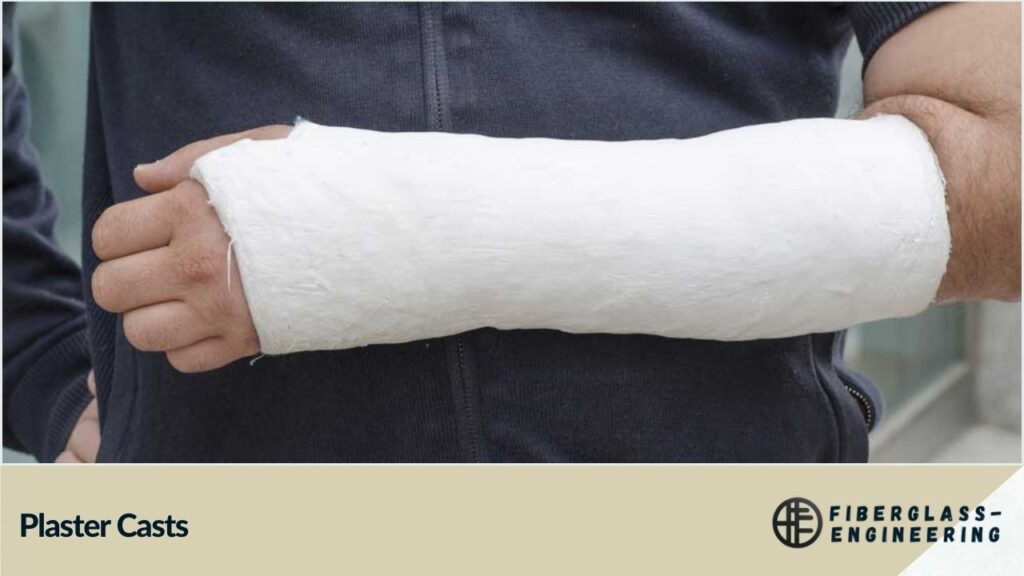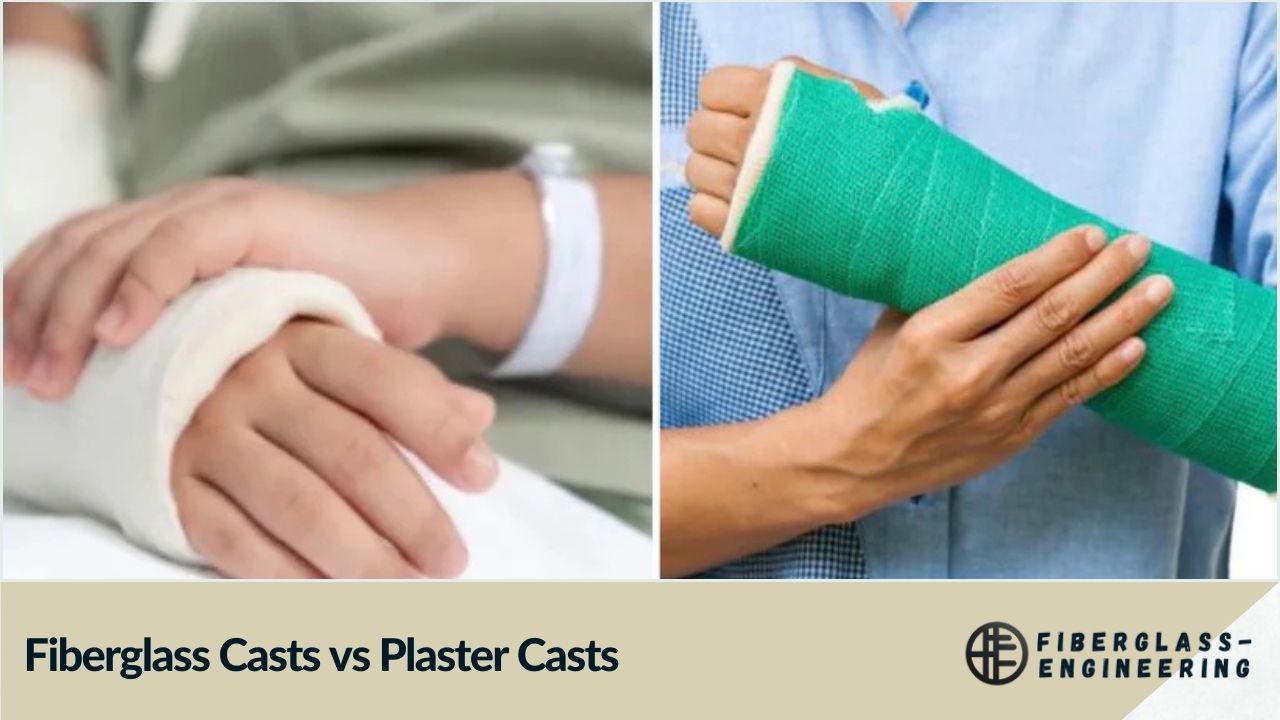When it comes to treating broken bones, the choice between fiberglass and plaster casts can significantly impact the healing process and patient comfort. Both types of casts have their unique advantages and disadvantages, making the decision an important one for healthcare providers and patients alike. In this comprehensive guide, we'll explore the differences between fiberglass and plaster casts, helping you understand which option might be better suited for various situations.
Understanding Casts
Before diving into the comparison, it's essential to understand the purpose of casts. A cast is a supportive device used to immobilize and protect broken bones or injured joints during the healing process. By restricting movement, casts allow the body to repair itself without further damage or misalignment.
Fiberglass Casts: The Modern Solution

Fiberglass casts have gained popularity in recent years due to their numerous advantages. These casts are made from a woven fiberglass material coated with polyurethane resin, resulting in a lightweight yet durable support structure.
Advantages of Fiberglass Casts
- Lightweight: Fiberglass casts are significantly lighter than their plaster counterparts, making them more comfortable for patients, especially children.
- Durability: The strength of fiberglass allows these casts to withstand more wear and tear, making them ideal for active individuals.
- Breathability: The porous nature of fiberglass allows for better air circulation, reducing the risk of skin irritation and odor.
- X-ray Transparency: Fiberglass casts are less dense, allowing for clearer X-ray images without removing the cast.
- Quick Drying: These casts dry much faster than plaster, often within 30 minutes to 2 hours.
- Waterproof Options: Some fiberglass casts can be made waterproof, allowing patients to bathe or swim with the cast on.
- Colorful Choices: Fiberglass casts come in various colors, which can be particularly appealing to younger patients.
Disadvantages of Fiberglass Casts
- Cost: Fiberglass casts are generally more expensive than plaster casts.
- Less Moldable: They are not as easily molded as plaster, which can be a drawback for certain types of fractures.
- Potential for Pressure Points: If not applied correctly, fiberglass casts can create uncomfortable pressure points.
Plaster Casts: The Traditional Approach

Plaster casts have been used for decades and are made from a mixture of plaster of Paris and water. While they may seem outdated compared to fiberglass, they still have their place in modern orthopedic care.
Advantages of Plaster Casts
- Excellent Moldability: Plaster casts can be easily molded to fit the contours of the body, making them ideal for certain types of fractures.
- Cost-Effective: They are generally less expensive than fiberglass casts.
- Swelling Accommodation: Plaster casts can be easily split or bi-valved to accommodate swelling without compromising support.
- Preferred for Initial Treatment: Many doctors prefer plaster for initial casting, especially in cases where swelling is expected to change.
Disadvantages of Plaster Casts
- Weight: Plaster casts are significantly heavier than fiberglass, which can be uncomfortable for patients.
- Longer Drying Time: It can take up to 48 hours for a plaster cast to dry completely.
- Vulnerability to Water: Plaster casts must be kept dry, as water can weaken or damage them.
- Less Durable: They are more prone to cracking and breaking than fiberglass casts.
- Limited Breathability: Plaster casts can trap moisture, leading to skin irritation and odor.
Choosing Between Fiberglass and Plaster
The choice between fiberglass and plaster casts often depends on several factors:
- Type of Fracture: Some fractures benefit from the moldability of plaster, while others are better suited to the strength of fiberglass.
- Patient Age and Activity Level: Younger, more active patients may benefit from the durability and lightweight nature of fiberglass.
- Location of Injury: Certain body parts may be better suited to one type of cast over the other.
- Expected Duration of Casting: Longer-term casts may benefit from the durability of fiberglass.
- Cost Considerations: Budget constraints may influence the choice between the more expensive fiberglass and the more affordable plaster.
The Application Process
Regardless of the material chosen, the application process for both types of casts is similar:
- Protective Layer: A soft, cotton-like material is applied to protect the skin.
- Cast Material: The chosen material (fiberglass or plaster) is then wrapped around the limb.
- Molding: The cast is molded to fit the contours of the body properly.
- Drying: The cast is allowed to dry and harden.
Care and Maintenance
Proper care is crucial for both types of casts:
- Keep it Dry: While some fiberglass casts may be waterproof, it's generally best to keep all casts dry.
- Avoid Scratching: Never insert objects under the cast to scratch itchy skin.
- Inspect Regularly: Check for any signs of damage, unusual odors, or skin irritation.
- Follow Activity Restrictions: Adhere to your doctor's guidelines regarding physical activity.
Removal Process
The removal process differs slightly between the two types:
- Fiberglass Casts: Removed using a special oscillating saw that cuts through the fiberglass without harming the skin.
- Plaster Casts: Can be removed with the same saw or, in some cases, by soaking and unwrapping.
Technological Advancements
Recent advancements have led to the development of hybrid casts that combine the benefits of both materials. These innovations aim to provide the moldability of plaster with the strength and lightweight properties of fiberglass.
Environmental Considerations
In an increasingly eco-conscious world, it's worth noting that fiberglass casts are not biodegradable, while plaster casts are. However, the longer lifespan of fiberglass casts may offset this disadvantage in terms of overall environmental impact.
Cost Analysis
While fiberglass casts are generally more expensive upfront, their durability may result in fewer replacements over the course of treatment. This could potentially lead to cost savings in the long run, especially for active patients or those requiring long-term casting.
Patient Comfort and Compliance
Ultimately, patient comfort plays a significant role in the healing process. The lightweight nature and breathability of fiberglass casts often lead to higher patient satisfaction and compliance with treatment plans. However, some patients may prefer the snug fit and familiar feel of a plaster cast.
Conclusion
Both fiberglass and plaster casts have their place in modern orthopedic care. While fiberglass casts offer numerous advantages in terms of weight, durability, and patient comfort, plaster casts remain valuable for their moldability and cost-effectiveness. The choice between the two should be made on a case-by-case basis, considering the specific needs of the patient and the nature of the injury.
As medical technology continues to advance, we may see further improvements in casting materials and techniques. For now, the decision between fiberglass and plaster casts remains an important one, balancing medical necessity with patient comfort and practicality.
FAQs
- Are fiberglass casts completely waterproof?
Not all fiberglass casts are waterproof. Some can be made waterproof with special liners, but always consult your doctor. - How long does it take for a plaster cast to dry?
Plaster casts typically take 24-48 hours to dry completely. - Can I choose the color of my fiberglass cast?
Yes, fiberglass casts often come in various colors, allowing patients to choose their preferred option. - Are fiberglass casts more expensive than plaster casts?
Generally, yes. Fiberglass casts tend to be more expensive than plaster casts. - Which cast is better for children?
Fiberglass casts are often preferred for children due to their lightweight nature and durability.

